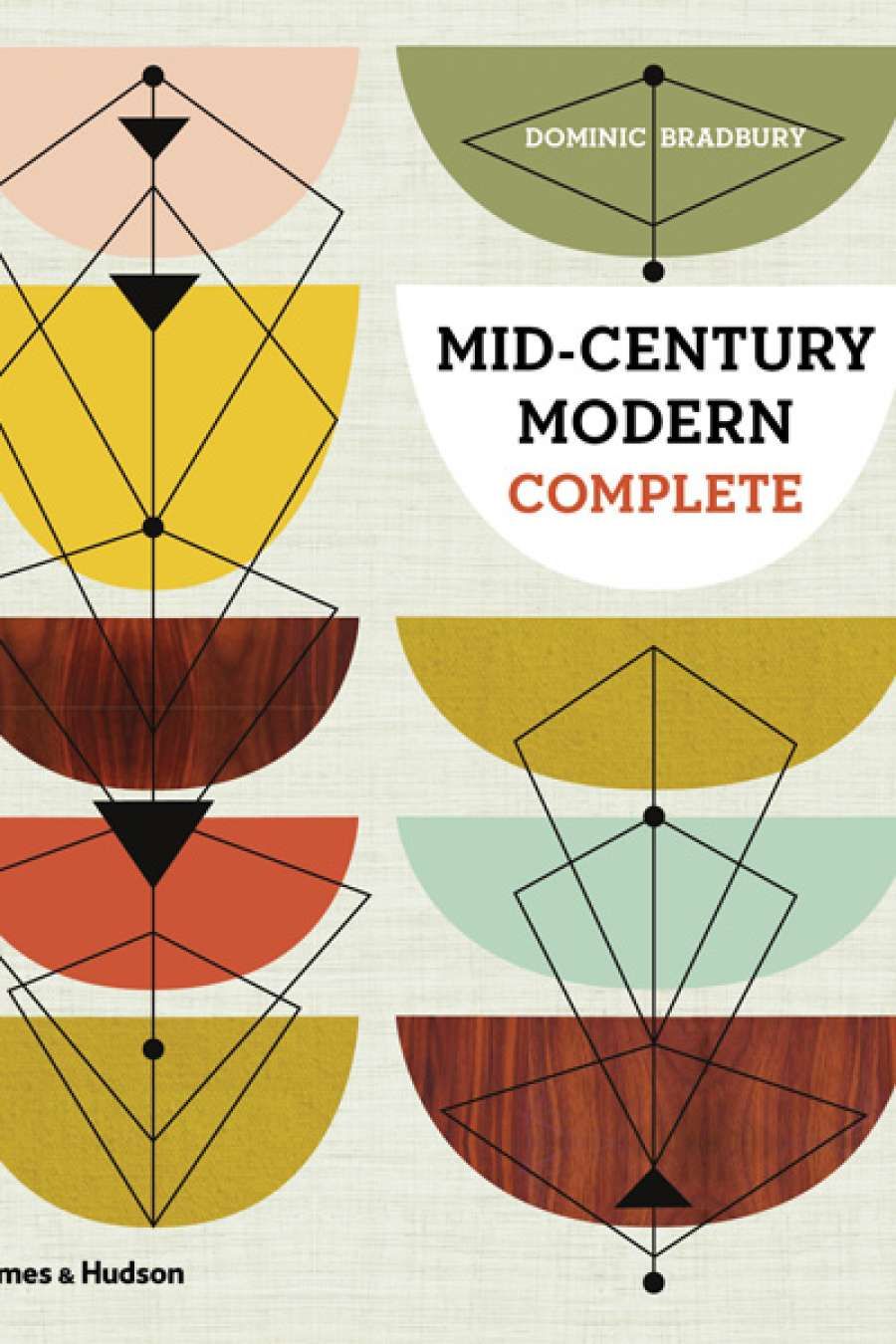
- Free Article: No
- Contents Category: Art
- Custom Article Title: Christopher Menz reviews 'Mid-Century Modern Complete' by Dominic Bradbury
- Book 1 Title: Mid-Century Modern Complete
- Book 1 Biblio: Thames & Hudson, $120 hb, 544 pp, 9780500517277
This handsome and attractively produced book offers a generous survey of international postwar design. With more than 1,000 images of works created bya who’s who of international design and architecture – many famous, some not – it is pitched both at the general reader with an interest in the subject and at the growing army of collectors of modernist design. Specialists in the field will seek out monographs on the individual designers, perhaps using the selected bibliography as a starting point. The volume is a collaborative one, with multiple authors, led by design writer and journalist Dominic Bradbury, supported by a team of auctioneers, academics, and specialist curators in design from major institutions. Design is categorised into sections by type (alphabetically by designer) – furniture, lighting, glass and ceramics, textiles, product and industrial design, graphics and posters – followed by a section on houses and interiors and, finally, an A-Z of designers.
 Charles and Ray Eames furniture. Model 670 lounge chair with matching 671 ottoman, Herman Miller, 1956, in rosewood plywood, enamelled aluminium and leather upholstery
Charles and Ray Eames furniture. Model 670 lounge chair with matching 671 ottoman, Herman Miller, 1956, in rosewood plywood, enamelled aluminium and leather upholstery
‘The wide range of images, covering everything produced for the home and beyond, shows how original and how pervasive modern design was (and is)’
The unnecessary addition of the word ‘complete’ to the otherwise perfectly sensible title Mid-Century Modern emboldens the reader to spot the omissions. To take the examples closest to home: the only Australians covered are the architects Robin Boyd and Harry Seidler (as they should be) and the highly promoted textile and wallpaper designer Florence Broadhurst. It seems odd to select Broadhurst as the only Australian designer, especially when her work is illustrated in the book by modern – and curiously undated – reissued fabrics instead of original ones from the 1960s and 1970s. (Not even the dates of Broadhurst’s original designs are given, and her image captions are not the only examples guilty of this important omission in what purports to be a ‘definitive survey’.) The leading Australian furniture designer of the period, Grant Featherston, is omitted, along with textile designer Frances Burke. Both could have held their own in this selection, and images of their work could easily have been selected from original examples, and not from reproductions. Surely the whole point of a book of this nature is to illustrate period examples as close to the original design date as possible, in order to give a sense of period and when objects were produced. This is especially so with textiles, where colours and fabric weaves are notoriously difficult to reproduce. In any case, reproductions give a misleading sense of the original; they would not be acceptable for inclusion in books on design work of earlier eras than the one closest to our own.
So much of modernist design is about creating a three-dimensional form in an appropriate material and colour, so that no extraneous decoration is necessary. Patterned surface decoration was limited largely to flat designs – wallpapers and furnishing textiles, including carpets and curtains – and, to a lesser extent, ceramics and glass. Much is made of the important aspect of training designers and the alliances between art, craft, and design. Some designers came from craft traditions, others from art and sculpture, and a surprising number of furniture designers were also architects or had studied architecture. Also covered is the link between art movements and design. The selection of designers generously covers these different modes of training and influences. Hand-made objects are included, as well as industrial ones, and we are presented with a remarkably rich visual account of what made postwar design modern.


Comments powered by CComment